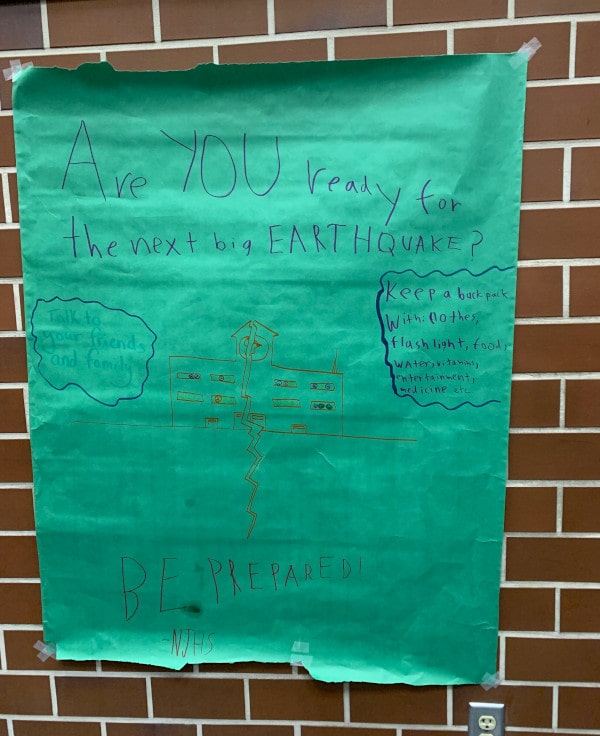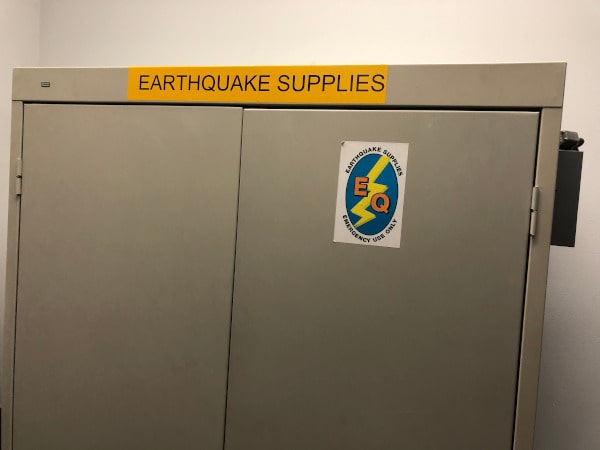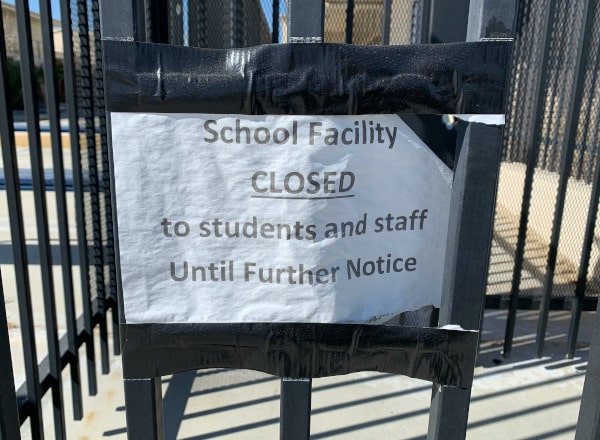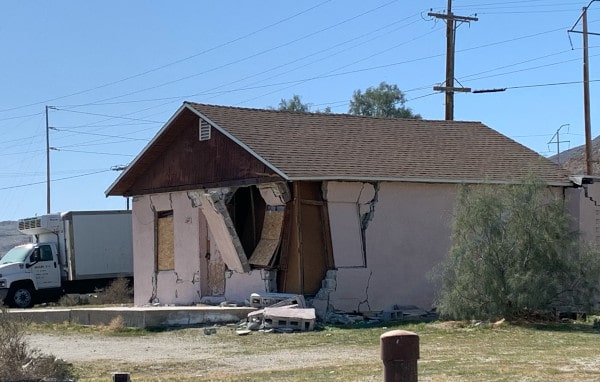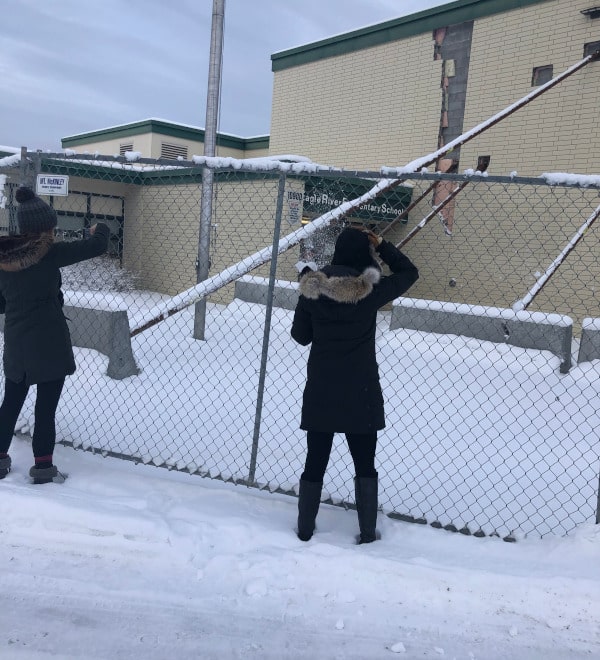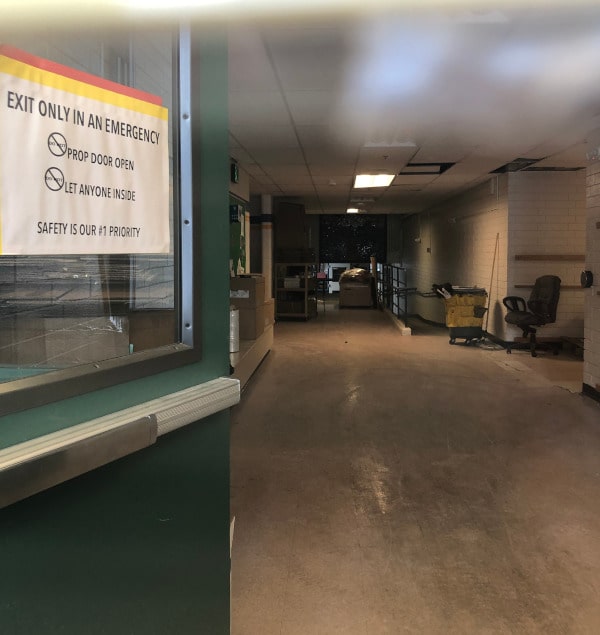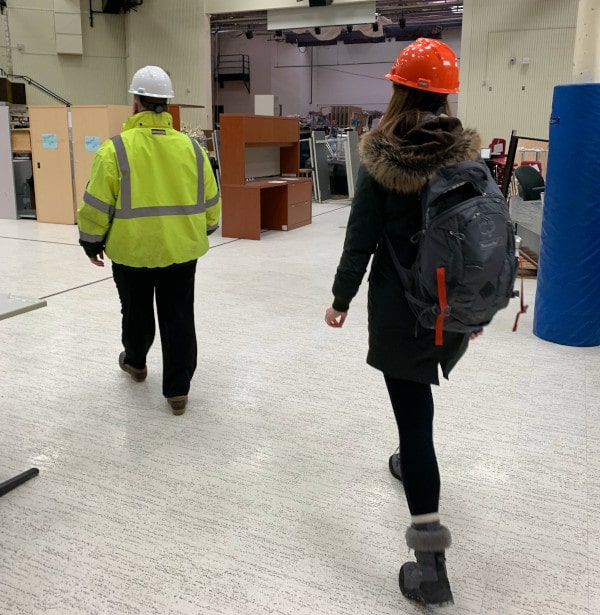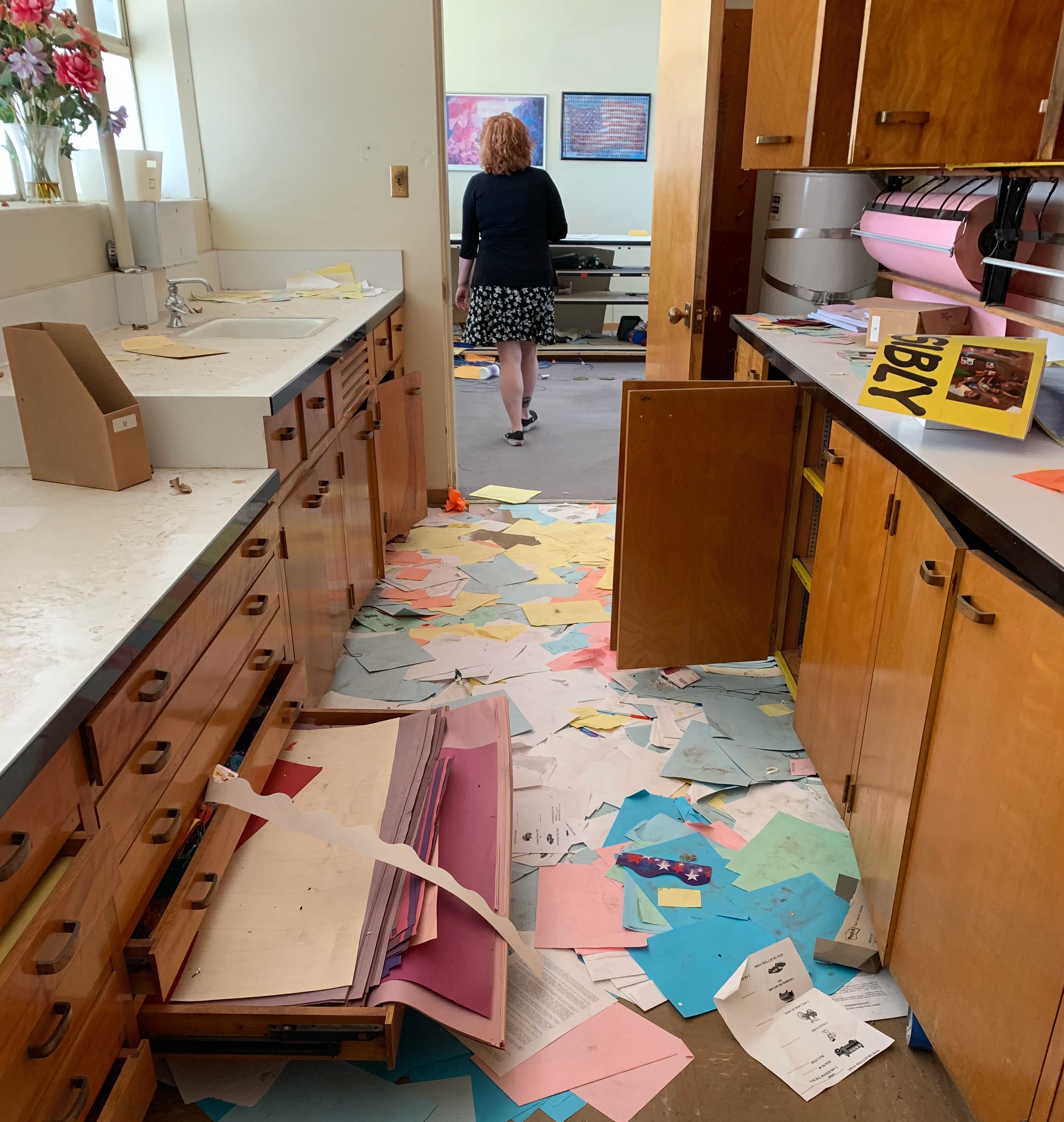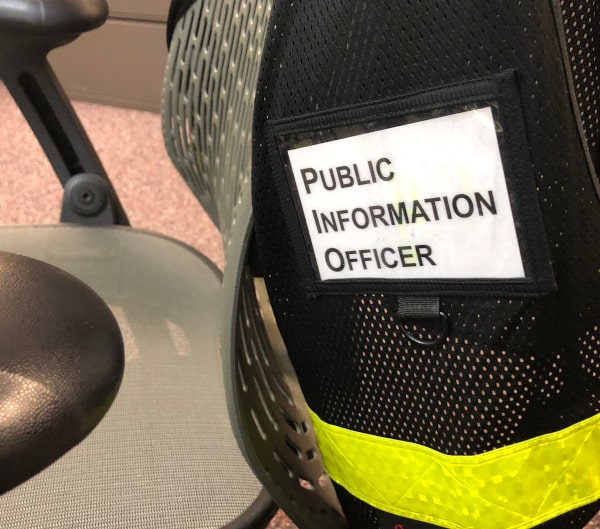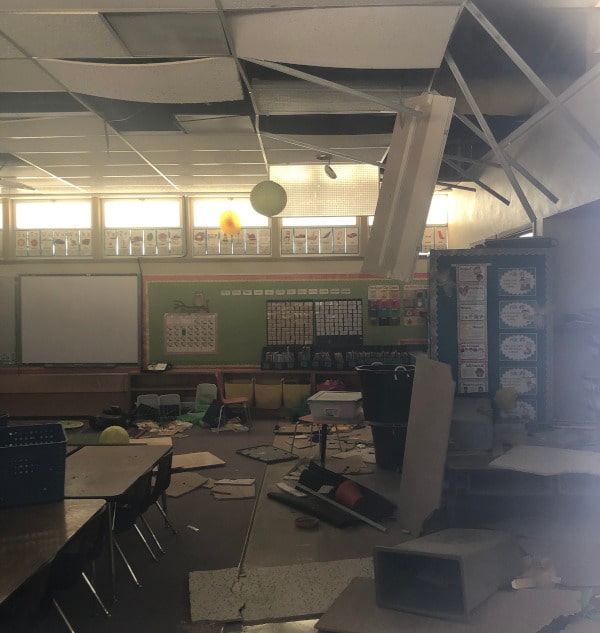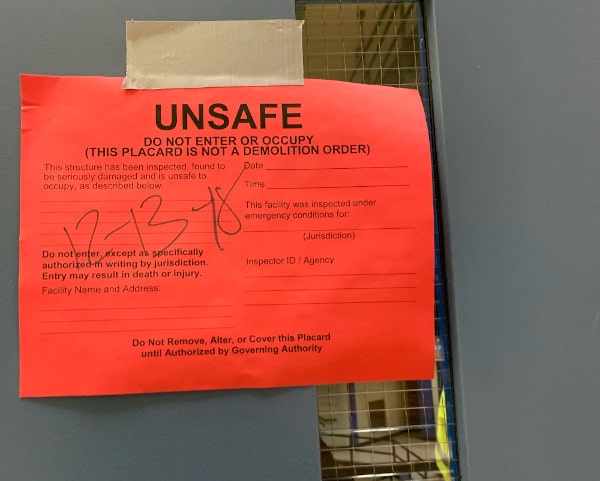Earthquake Early Warning and Schools Study
What is the Challenge?
Schools are where current and future generations of students are educated. School districts employ teachers, administrators, and other staff who deliver the curriculum and support the development of children and youth. School buildings often serve as gathering spaces and focal points within communities.
For these and many other reasons, schools are unique in terms of their societal responsibilities and the risks they face. Given their importance, this project focuses on K-12 schools in earthquake-prone regions and asks: How can ShakeAlert be most effectively integrated into schools?
To answer that question, our research team at the Natural Hazards Center, in collaboration with the U.S. Geological Survey, launched a multi-pronged interview- and survey-based effort to learn from school administrators, teachers, students, parents, emergency managers, engineers, and others who are concerned with earthquake school safety.
Earthquake activity in Anchorage, Alaska (November 2018) and Ridgecrest and Trona, California (July 2019) underscored the importance of preparedness, especially in schools. Although published social science research on preparedness is extensive, there is less information on Earthquake Early Warning (EEW) systems and how they are integrated into existing school emergency plans and drills.
California, Oregon, and Washington are the first three U.S. states to activate ShakeAlert, a regional EEW system that can send warnings of significant earthquakes to areas outside the immediate epicenter location before serious shaking occurs. The vital seconds provided by ShakeAlert can allow for automatic shutdowns of industrial and technological systems and prompt people to take protective actions—such as drop, cover, and hold on.
This research project is working to fill a major gap in the literature by assessing the readiness, willingness, and ability of K-12 schools in Alaska, California, Oregon, and Washington to adapt their emergency plans to include EEW.
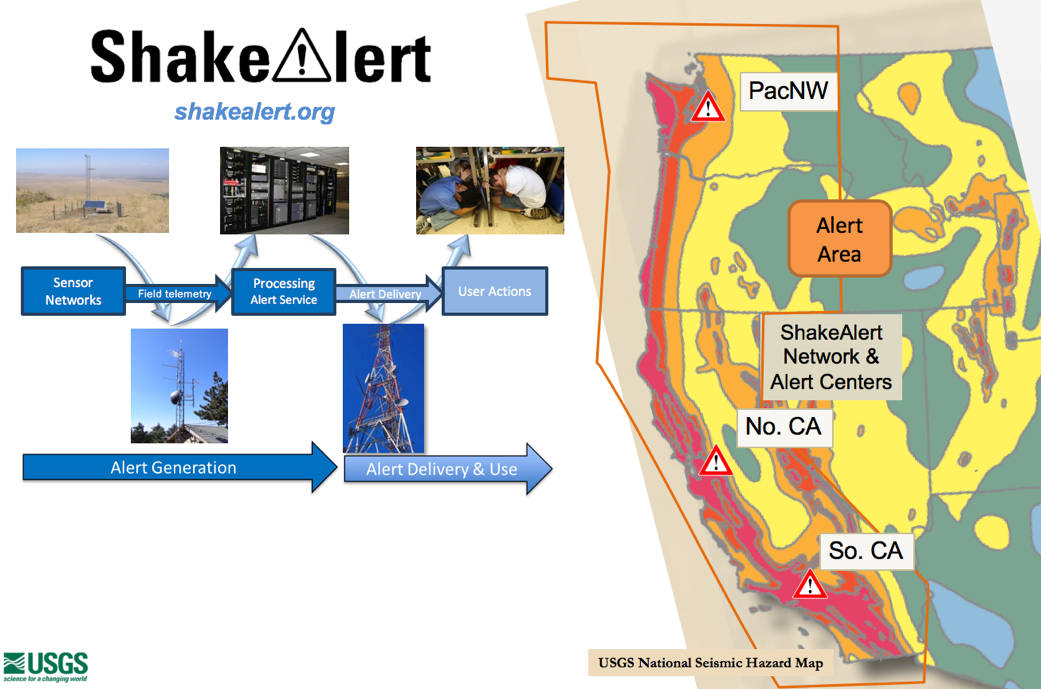 Photo credit: ShakeAlert.org, 2016
Photo credit: ShakeAlert.org, 2016
Project Overview
Phase 1: Qualitative Research in Earthquake-Affected Communities
The research team engaged in qualitative research in Anchorage, Alaska in January 2020. We conducted in-depth interviews and focus groups with administrators in the Anchorage and Matanuska-Susitna Borough school districts as well as teachers, students and parents, emergency management personnel, and engineers.
Our questions focused on their earthquake experiences, damage to the built environment, and disruption to the social environment. Because Earthquake Early Warning is not yet available in Alaska, we also asked all interview respondents about their awareness and perceptions of ShakeAlert and their knowledge regarding recommended protective actions.
In February 2020, our research team collected interview and focus group data from 25 adult participants who were affected by or involved in the response to the 2019 Ridgecrest earthquakes. Specifically, we conducted in-depth interviews and focus groups with administrators in the Ridgecrest and Trona school districts as well as with teachers, parents, emergency management personnel, and engineers.
Our questions focused on their earthquake experiences, damage to the built environment, and disruption to the social environment. Because Earthquake Early Warning was recently released in California, we also asked all interview respondents about their awareness and perceptions of ShakeAlert and their knowledge regarding recommended protective actions.
Phase 2: Quantitative Survey Research in the Four-State Region of Alaska, California, Oregon, and Washington
For the second phase of the study, we conducted an online survey to learn from school district leadership about integrating EEW systems in schools in Alaska, California, Oregon, and Washington. We invited all superintendents across the four-state region to complete our 15-minute online survey in Spring 2022. The survey—which was pilot tested by earthquake researchers, school district leaders, and state emergency managers across the four-state region—collected data on: earthquake experience; earthquake safety, drills, and warnings in schools; knowledge and current use of ShakeAlert; adoption and funding of EEW; potential EEW opportunities in schools; potential EEW barriers in schools; EEW delivery channels; preferences for alert messaging; tolerance for false and missed alerts; and respondent and school district characteristics.
Results from this survey help to inform strategies to increase ShakeAlert uptake in K-12 schools, as well as the integration of this new technology into existing school drills and emergency plans. This knowledge is vital to advancing school safety in the western United States.
Outcomes
To facilitate the integration of EEW into school emergency plans, our research examines:
- Existing earthquake preparedness activities in schools
- Response, impacts, and recovery from recent earthquakes
- Lessons learned from recent earthquakes
- Knowledge, perceptions, and barriers to implementing EEW in schools
Publications
Adams, Rachel M., Holly Davies, Lori Peek, Meghan Mordy, Jennifer Tobin, Jolie Breeden, Sara K. McBride, and Robert M. de Groot. 2024. "ShakeAlert® and Schools: Incorporating Earthquake Early Warning in School Districts in Alaska, California, Oregon, and Washington." International Journal of Disaster Risk Reduction 112: 04735. https://doi.org/10.1016/j.ijdrr.2024.104735
Peek, Lori, Rachel M. Adams, Jolie Breeden, Jennifer Tobin, Robert M. de Groot, and Sara K. McBride. 2024. “Earthquake Early Warning in the Western United States: Special Considerations for Schools.” Pp. 29-48 in Disaster and Climate Risk Education: Insights from Knowledge to Action, edited by A. Yildiz and R. Shaw. Singapore: Springer Nature. https://doi.org/10.1007/978-981-97-5987-3_3
Adams, Rachel M., Jennifer Tobin, Lori Peek, Jolie Breeden, Sara McBride, and Robert de Groot. 2022. “The Generational Gap: Children, Adults, and Protective Actions in Response to Earthquakes.” Australasian Journal of Disaster and Trauma Studies 26(2): 67-82. http://trauma.massey.ac.nz/issues/2022-2/AJDTS_26_2_Adams.pdf
Research Briefs
Presentations
Adams, Rachel. 2022. "Schools, Earthquakes, and Early Warning Systems." ShakeAlert Education Research Symposium.
Adams, Rachel, Jolie Breeden, Lori Peek, and Jennifer Tobin. 2021. "The Generational Gap: Children, Adults, and Protective Actions in Response to Earthquakes." ShakeAlert Social Science Research Symposium.
Adams, Rachel. 2020. “ShakeOut and ShakeAlert: Enhancing Earthquake Preparedness Through Drills and Early Warning.” ShakeAlert Joint Committee for Communication, Education, and Outreach (JCCEO) Meeting.
Adams, Rachel. 2020. “ShakeOut and ShakeAlert: Enhancing Earthquake Preparedness Through Drills and Early Warning.” U.S. Geological Survey Social Science Working Group Meeting.
Peek, Lori. 2020. “How Can We Integrate ShakeAlert into Schools? Lessons from Earthquake-Affected Communities.” ShakeAlert Joint Committee for Communication, Education, and Outreach (JCCEO) Community Partner Meeting.
Tobin, Jennifer. 2020. “Earthquake Early Warning and Schools: Preliminary Findings from Alaska and California.” 45th Annual Natural Hazards Research and Applications Workshop.
Posters
Adams, Rachel, Jennifer Tobin, Jolie Breeden, Meghan Mordy, and Lori Peek. 2025. "Implementing ShakeAlert® in Schools: A Mixed Methods Earthquake Early Warning Study." Natural Hazards Workshop.
Adams, Rachel, Jennifer Tobin, Jolie Breeden, Lori Peek, and Meghan Mordy. 2024. "Implementing ShakeAlert® in Schools: A Mixed Methods Earthquake Early Warning Study." Natural Hazards Workshop.
Adams, Rachel, Jennifer Tobin, Jolie Breeden, and Lori Peek. 2020. “Schools, Earthquakes, and Early Warning Systems: Preliminary Findings from Alaska and California.” National Earthquake Conference.
Research Team
Principal Investigators:
Lori Peek, Director, Natural Hazards Center, Professor, Department of Sociology, University of Colorado Boulder (Lori.Peek@colorado.edu)
Rachel Adams, Research Associate, Natural Hazards Center and CONVERGE, University of Colorado Boulder (Rachel.Adams-1@colorado.edu)
Jennifer Tobin, Deputy Administrator, Natural Hazards Center, University of Colorado Boulder (Jennifer.L.Tobin@colorado.edu)
Jolie Breeden, Lead Editor and Science Communicator, Natural Hazards Center, University of Colorado Boulder (Jolie.Breeden@colorado.edu)
Program Directors:
Robert DeGroot, U.S. Geological Survey (rdegroot@usgs.gov) and Sara McBride, U.S. Geological Survey (skmcbride@usgs.gov)
